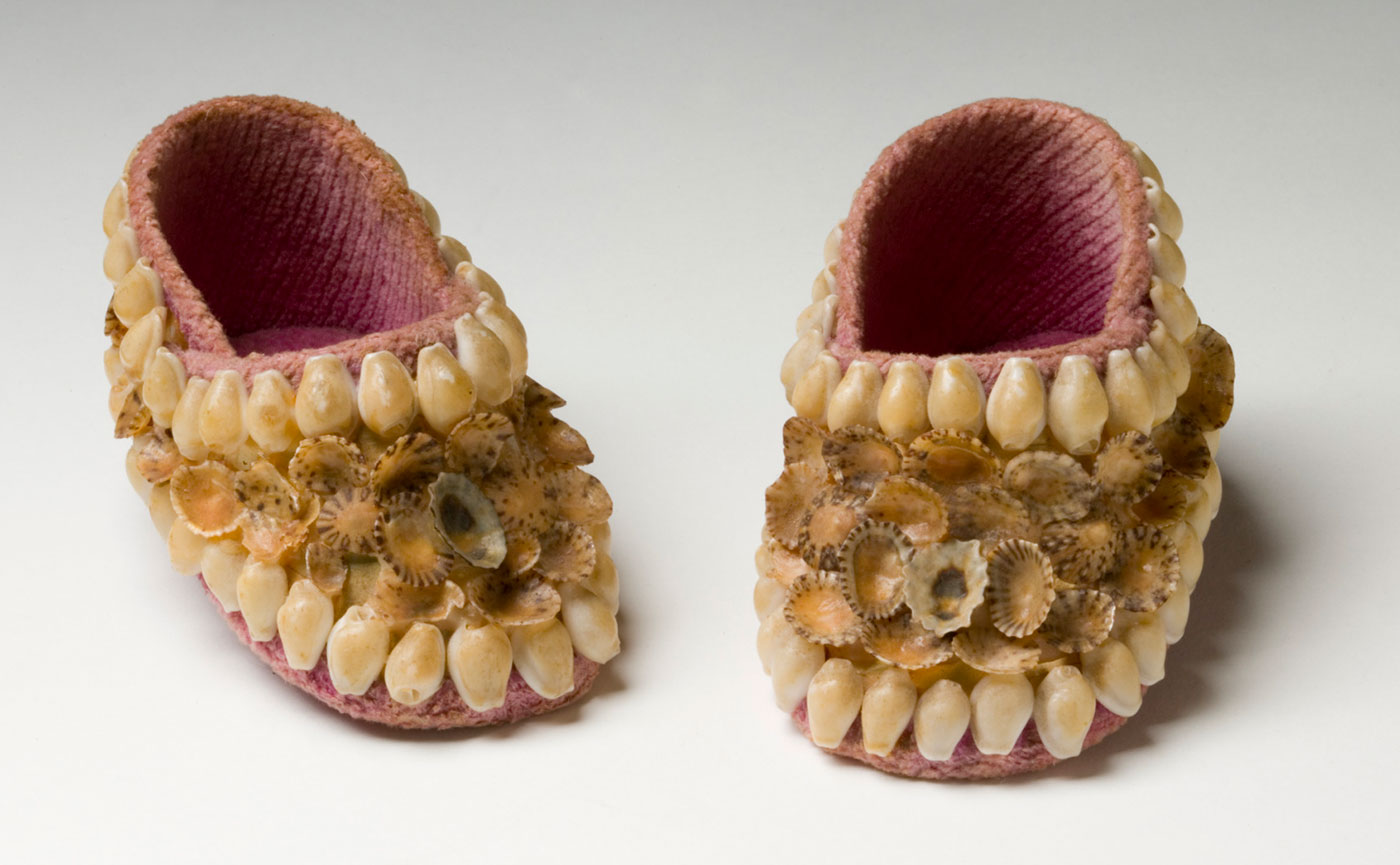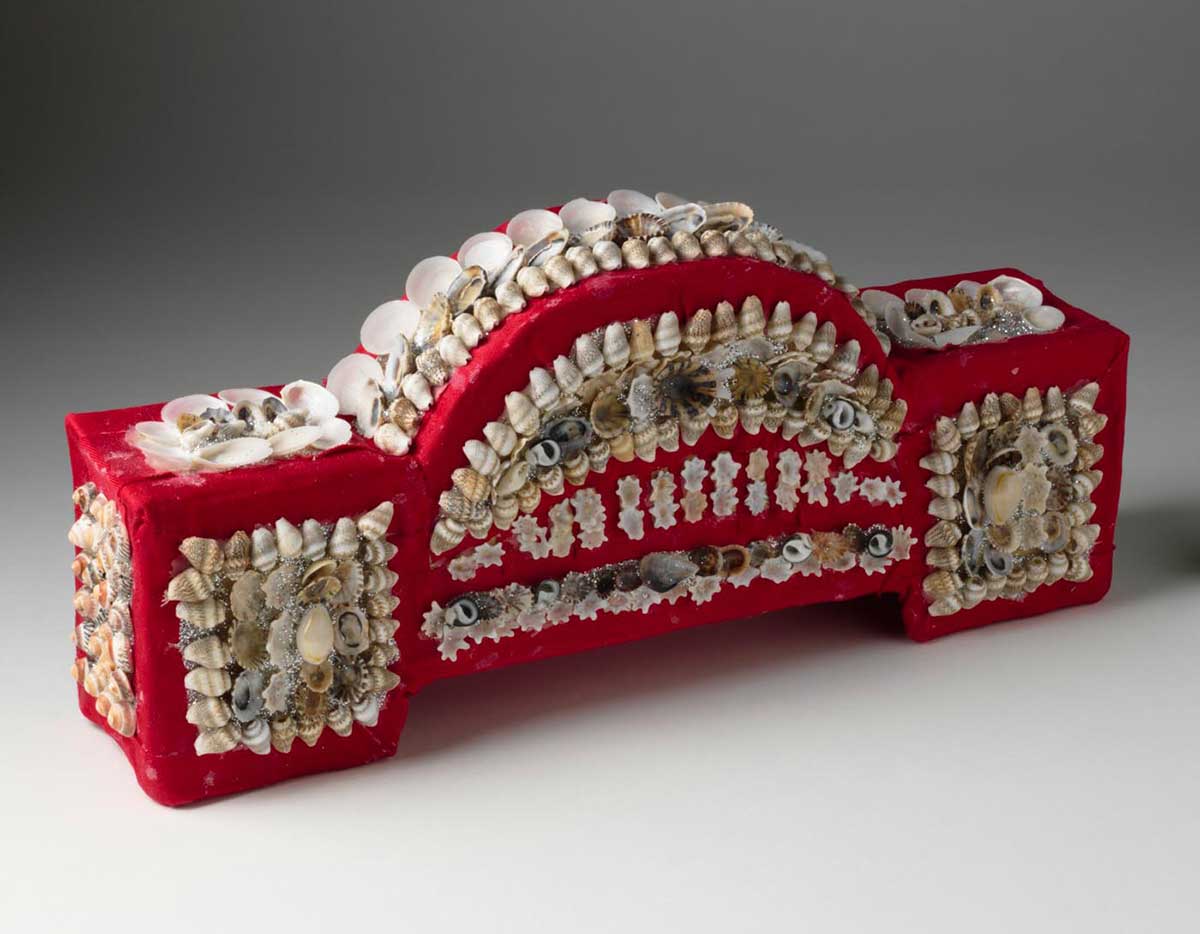This shellwork Sydney Harbour Bridge was made by Bidjigal woman Esme Timbery. Esme continues the tradition of creating shellwork artefacts at La Perouse in Sydney.
The shellwork tradition has transformed several times over many decades. It began as a First Nations women's craft work, was adapted and tailored to suit the tourist souvenir market, and is now considered high art.
From craft to art
Esme Timbery comes from a family of noted shellworkers. She won the inaugural Parliament of New South Wales Indigenous Art Prize, with her shellwork Harbour Bridge entry, in 2005.
The National Museum acquired three of Esme's shellwork harbour bridges in 2007, including the work pictured above.
The Museum's National Historical Collection also includes a pair of shellwork baby shoes thought to have been made and sold at La Perouse around the 1950s.

Successful First Nations enterprise
The production of souvenirs by First Nations women in Sydney dates at least to the 1880s when women were recorded selling shell baskets at Circular Quay and Botany Bay.
These women turned a traditional female handicraft into an industry. They were encouraged by missionaries, who helped to find markets in Australia and overseas.
La Perouse reserve
At the La Perouse reserve on the northern side of Botany Bay, formally gazetted in 1895, missionaries encouraged the ongoing production of artefacts as a means of control and keeping people busy and distracted from vices.
The shellwork baby shoes and jewellery boxes they made reflected a Victorian sensibility for craft objects, drawing on shell crafts that were popular in Britain and Australia in the late 19th century, or Victorian era.
A weekend outing to 'The Loop,' as the La Perouse tram terminus was known, became a fashionable pastime. Local and overseas visitors made the trip, especially after 1905 when the area was declared a public recreational space.
Families would catch the tram to La Perouse and wander along the headland, buying shellwork and other souvenirs to take home.
Harbour Bridge as a symbol
In her book Botany Bay: Where Histories Meet, historian Dr Maria Nugent writes about the emergence of the Sydney Harbour Bridge as a curious, but popular design on souvenirs made by First Nations people at La Perouse.
After the bridge opened in 1932, its design appeared on wooden boomerangs crafted by local men, and women made individual models of the structure.
Dr Nugent said earlier shellwork designs, such as baskets originally sold to white suburban women, were remodelled to cater for the tourist market:
The process of the transformation of shell art from Victorian-era curio to a Sydney souvenir was complete when a shell Sydney Harbour Bridge hit the stalls.
Dr Nugent said First Nations women responded to changing markets and over time their work was sold to city department stores and gift shops. One of their biggest markets was American servicemen in Australia during the Second World War.
The sale of souvenirs at La Perouse was one of the main sources of income for First Nations people in the first half of the 20th century.
The tourist industry declined at La Perouse in the 1960s when the tram service and tourist ferry ceased operations. At the same time, First Nations souvenir makers had trouble competing with mass-produced items.
Timbery shellwork tradition
Esme Timbery was born in 1931 and learnt the shellwork technique and designs from her mother Elizabeth. As a child and young woman she collected shells with members of her family on the shores of Botany Bay and Cronulla in Sydney's south and on the south coast of New South Wales.
Timbery's great grandmother, 'Queen' Emma Timbery was a noted shellworker. Her wares were regularly shown and sold at the Sydney Royal Easter Show, and at an exhibition of Australian crafts in England in 1910.
Esme was one of a few La Perouse women making shellwork in 2013. She began to accept commissions and entered works in contemporary art exhibitions. Her pieces are now held in museums and art galleries around Australia.
In our collection
